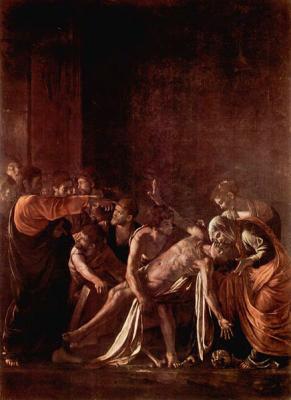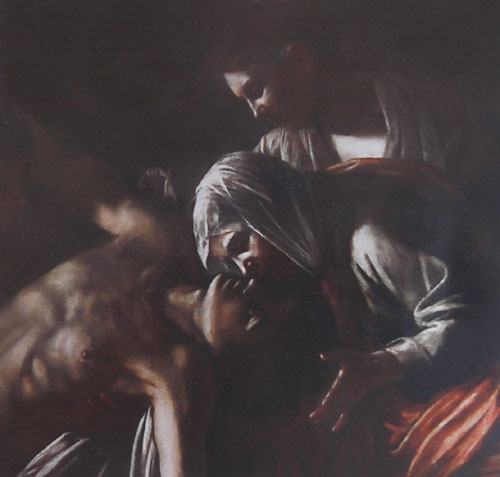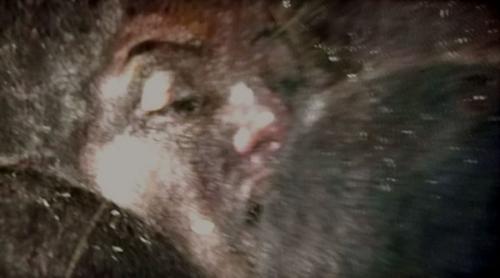Caravaggio exhibits 'Resurrection of Lazarus'

ROME-Until July 15th, at the Museum of Rome Palazzo Braschi by Piazza Navona the large restored masterpiece will be displayed in a special room.
This is an opportunity not to be missed because of the importance and size of the painting and because the lighting and the setting is ideal. You are able to approach very close to see the brushstrokes and get a sense of the weave of the canvas. You are able to also learn about the restoration process in some detail.
The painting was transported from Messina. The restoration in the Museum of Rome took seven months. The painting had significant damage from previous restorations and from the environmental conditions in Messina. It was exposed to both indoor and outdoor conditions of uncontrolled variations of temperature and humidity.
It is being called "Resurrezione di Lazzaro", Resurrection of Lazarus, where it should be called Raising of Lazarus. As with the Virgin being assumed into Heaven it is passive on the part of the subject. Jesus ascended, Mary was assumed. Lazarus did not resurrect himself, he was raised.
Caravaggio painted this after he escaped from the prison in Malta. He received support in Sicily and the commission was important and the size of the painting signifies that his great gifts as a painter were still highly prized.
There are many similarities with earlier Roman works. Especially striking is the repeat pose of Jesus pointing. In the Calling of Saint Matthew in the French church in Rome he is pointing-calling. In the resurrection scene he is raising, leaning back slightly, pulling up his friend. Gone are the rich expanses of glowing flesh and brilliant reds. It is still the hard to describe “Caravaggio red” but it is in a dark haze. All of the forms are recognizable only from the way the light just touches them and reveals shape. The light is illusive hitting and skipping along from left to right. Less is better. He decides which characters reveal them selves and which remain only a hint in darkness where we must imagine their essence solely from the gestures.
As in a number of his group paintings there is a half hidden self portrait. The usual expressions early on where disinterest or amazement, but now because of what he has lived, there is an expression bordering on horror. He is the figure in the back on the far left.
Everything comes out of the dark. That is how he paints. This is his mature somber style reflecting the intense troubles of his later life even though he still paints miracles. He always knew about death, and even death on the streets, but now it is what he thinks about and paints more than anything else.
He is like the old Titian and the old Rembrandt who threw away the fine sable pointed brushes and were confident to load a large bristle brush with a thick glob of lead white paint and with one stroke describe, for example, the jaw of a rising man or the cheek bones of his sisters. Painting became like thinking for these masters.




